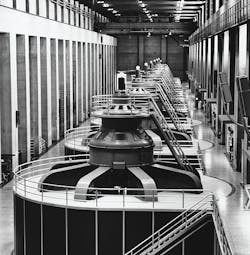Flavors of alternative energy (sidebar)
Here are some varieties of alternative sources and their current development status. Much of this information comes from Section Z (www.sectionz.info/issue_2).
Biomass gasification. This is essentially the use of waste as an alternative fuel source. Biomass is already being used widely. Proponents tout biomass as an energy source that burns cleanly and efficiently. In the real world, plant managers note that it burns unevenly, depending on what type of waste is being burned at any given moment. Different forms of waste produce a variety of emissions that can be challenging to scrub. Studies at the Oak Ridge National Laboratory show that power crops like switchgrass could be produced cost-competitively as a biomass fuel.
Net metering. Many plants are now generating their own electricity. When they have excess, they can sell it to the local power grid. They use their automation systems to determine whether it’s less expensive to buy from the grid or generate their own power to run operations. During some energy spikes, companies are generating power to sell to the grid at high rates while shutting down their own plants.
Tidal power. San Francisco is considering a HydroVenturi (www.hydroventuri.com) system that has no underwater moving parts but creates suction that runs turbines on the nearby shore. The system would utilize the power of the 400 million gallons of water that enter and exit the Golden Gate twice daily.
Wind. This is one of the fastest growing areas of alternative energies. Wind has become price-competitive with coal and natural gas. But so far, few plants are putting up windmills to run their production lines.
Geothermal. Energy from the heat of the Earth already accounts for 6 percent of the electricity generated in California. Companies such as Ormat (www.ormat.com) are now offering smaller facilities that tap geothermal resources at lower temperatures, in the 200 to 250 degrees Fahrenheit range.
Solar. Photovoltaic cells convert sunlight into electricity with no moving parts. The price for the technology has dropped tenfold in the past 25 years. Lawrence Berkeley National Laboratory is working on a development that would use the full spectrum of sunlight to nearly double the efficiency of the conversion process.
See the story that goes with this sidebar: Getting Energy Smart

